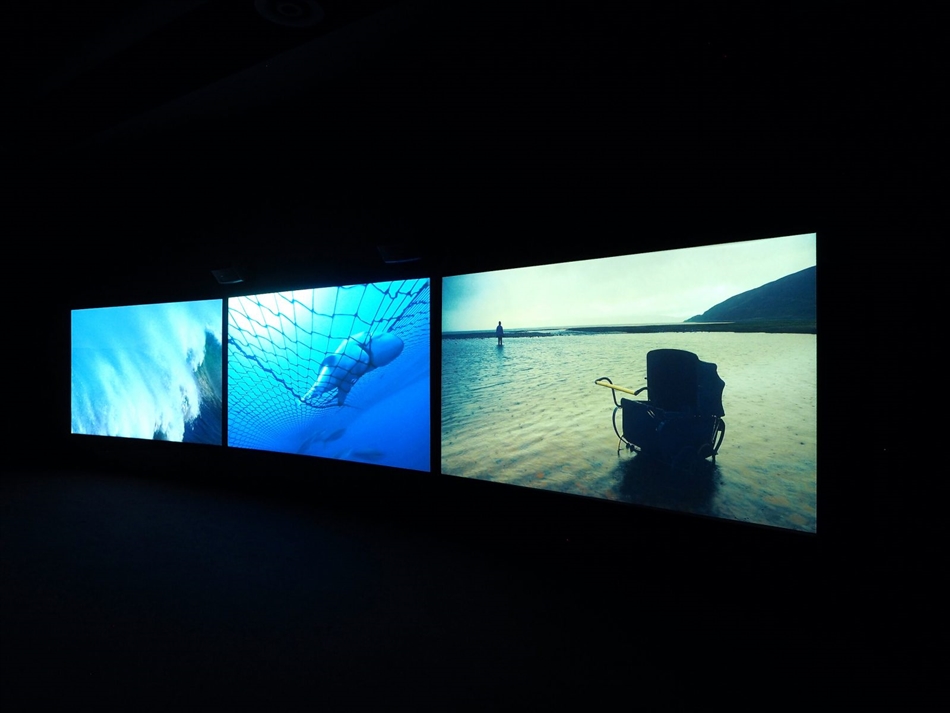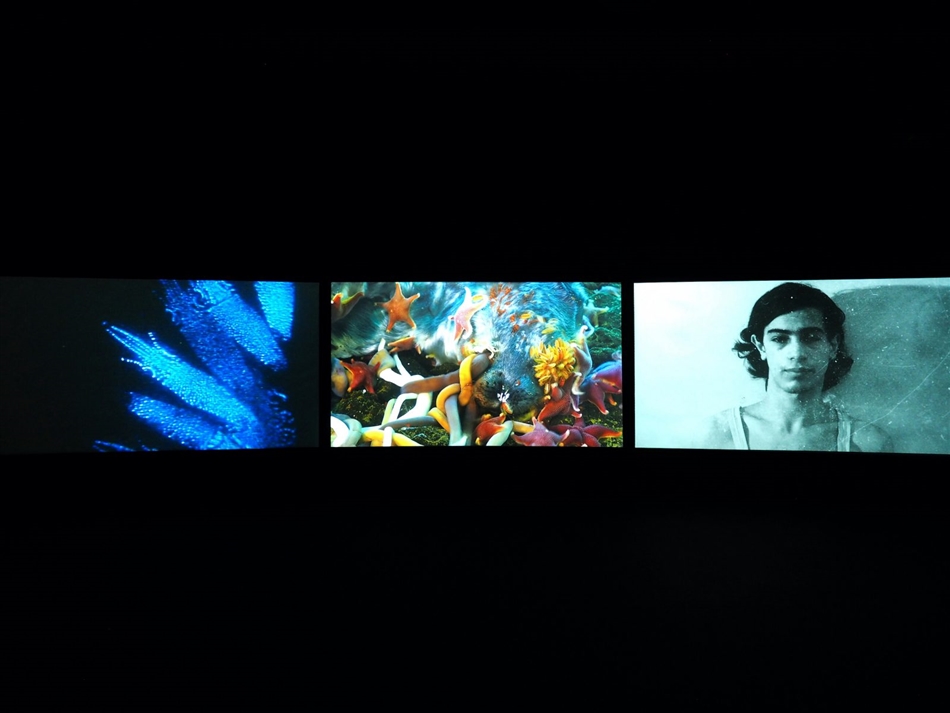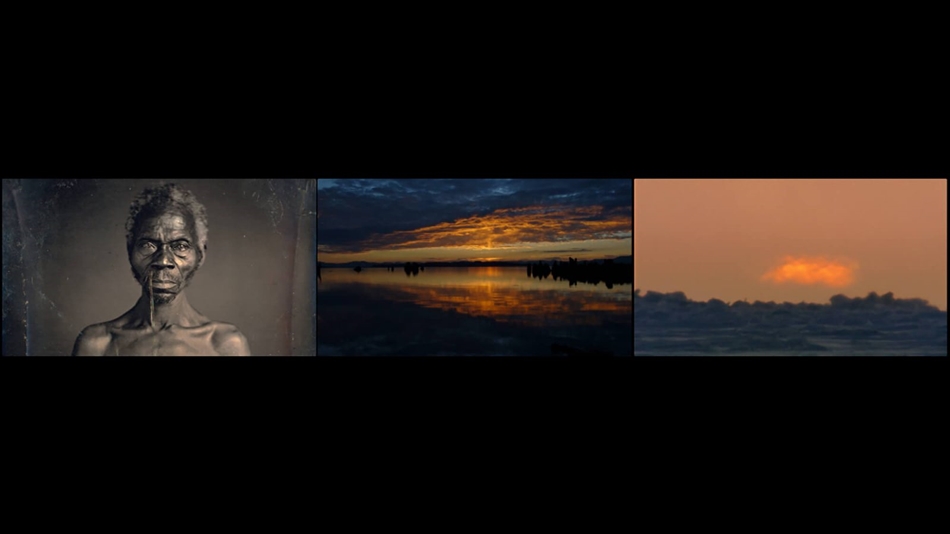John Akomfrah‘s three-channel video installation Vertigo Sea (2015) is at once devastatingly beautiful, heart-wrenching and incredibly timely. Composed of excerpts from films and television programs drawn primarily from the archives of the BBC natural history unit, along with staged footage shot by Akomfrah, it weaves together multiple narratives that portray the ocean as a site of terror and of beauty.
John Akomfrah, CBE (born 4 May 1957) is a British artist, writer, film director, screenwriter, theorist and curator of Ghanaian descent, whose "commitment to a radicalism both of politics and of cinematic form finds expression in all his films".
A founder of the Black Audio Film Collective in 1982, he made his début as a director with Handsworth Songs (1986), which examined the fallout from the 1985 Handsworth riots. Handsworth Songs went on to win the Grierson Award for Best Documentary in 1987. / Wikipedia
Image courtesy of Smoking Dogs Films and Lisson Gallery

Image courtesy of Smoking Dogs Films and Lisson Gallery

Image courtesy of Smoking Dogs Films and Lisson Gallery
Vertigo Sea juxtaposes powerful scenes of the whale hunt off the shores of Newfoundland; polar bear hunting on Arctic ice flows; kilometre-long schools of fish and plankton; views of the predatory instincts of all forms of marine life; but also black bodies aligned in the hold of a slave ship; Vietnamese boat people fleeing their country; political prisoners being cast into the sea; and the all too common sight of refugees floating in makeshift vessels. Many of these images are familiar to us, we can identify their historical and geographical references, we recognize the stories behind them. And yet, their proximity one to the other with no apparent correspondence across three screens, and over the 48 minutes the work runs, produces a vertiginous effect.

Image courtesy of Smoking Dogs Films and Lisson Gallery
The fictional tableaux that intersperse the work “animate” Akomfrah’s conception of Romanticism, both as an art movement and as a philosophical treatise. The artist directly references the seascapes of J.M.W. Turner, Théodore Géricault’s The Raft of the Medusa (1818-1819) and the sublime landscapes of Caspar David Friedrich, while fragments of texts from Ralph Waldo Emerson, Herman Melville’s Moby Dick (1851), Virginia Woolf’s The Waves (1931) and Heathcote Williams’ poem Whale Nation (1988) function as intertitles. Further, Akomfrah tells the incredible story of Olaudah Equiano (about 1745-1797), a freed slave from the Kingdom of Benin, who became a British abolitionist, sea merchant and Arctic explorer. In this complex and highly compelling video installation, the sea is the theatre where multiple (hi)stories come together. The artist deliberately and explicitly implicates the viewer, not only in our collective responsibilities, but also in the creation of new meanings.

Image courtesy of Smoking Dogs Films and Lisson Gallery

Image courtesy of Smoking Dogs Films and Lisson Gallery